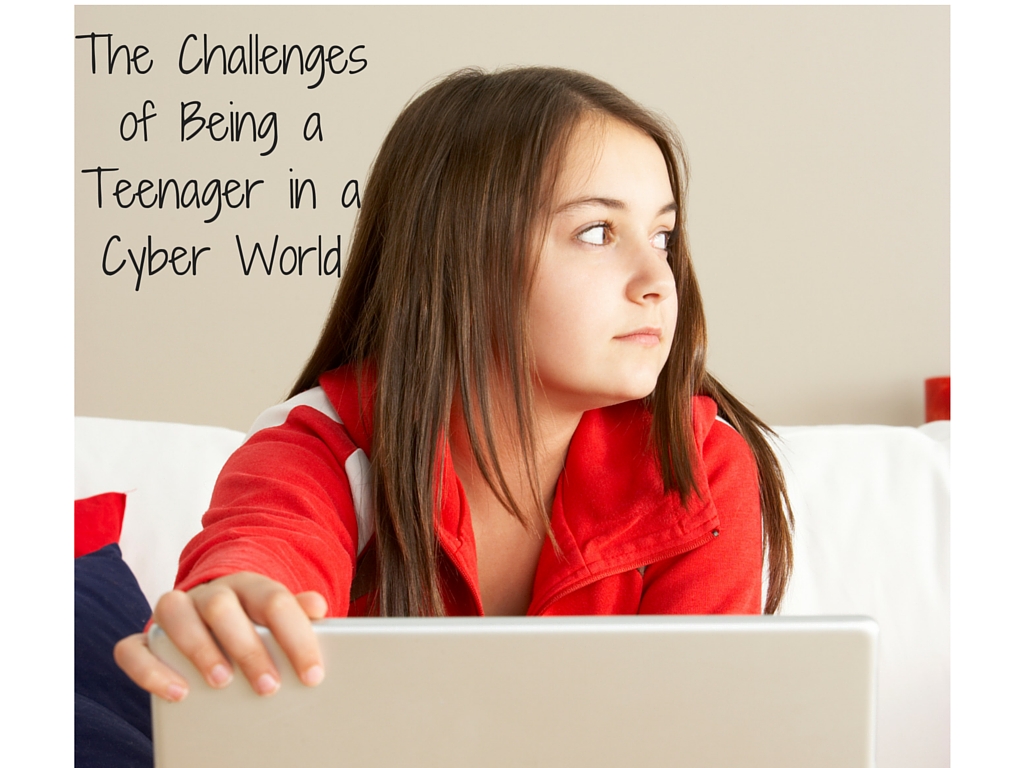The Challenges of Being a Teenager in a Cyber World
Being a teenager in this day and age has a multitude of unique challenges that are only reinforced by the progression of technology and the Internet. These unique challenges and stressors are taking a toll on the mental health of our youth and require special understanding and support.
The American Psychological Association cited American teenagers as the most “stressed-out” age group in the U.S., according to APA’s 2013 Stress In America survey. While adults rate their stress at a 5.1 on a 10-point scale, teens rate their stress levels, on average, at 5.8.
Just look at some statistics from NAMI – The National Alliance on Mental Illness (www2.nami.org) and the U.S. Office of Adolescent Health (hhs.gov):
- 21% of children/adolescents have diagnosable mental disorders that cause at least minimum impairment in their lives.
- Nearly one third of adolescents show symptoms of depression
- In any given year, only 20% of the children with mental disorders are identified and receive mental health services.
- Suicide is the 3rd leading cause of death among youth ages 15-24
- An ongoing stigma regarding mental health disorders inhibit many adolescents from seeking help.
So what are these unique challenges and stressors that youth face today? Here is a brief summary:
Risks of Social Media:
The November 2015 episode of the popular podcast This American Life, included an intriguing segment that highlighted the complexities of being a teenager in the world of today’s social media. In Finding the Self in Selfie, three teenage girls openly discuss the complex rules and “social obligation” of popular social media sites (primarily Facebook and Instagram). As an adult, it can be unsettling to listen to the podcast as three 9th graders post selfies and eagerly wait to count their “likes” and read the comments about how “pretty” they are. The girls explain that in order to “stay relevant” you have to post frequently and receive abundant comments about how “hot” and loved you are by your acquaintances. The girls also explained how confusing it is to try and interpret some of the more passive aggressive comments such as “you’re perfect, I hate you.”
This podcast highlights how different it is to be a kid today. In today’s world, kids have to market themselves and their public image every day. Not only does there seem to be a hyperfocus on appearances, there is a moment-to-moment and public tally on how “relevant” you are compared to your peers. This chronic evaluation of one’s image can generate anxiety, self-doubt, and feelings of rejection. As we know, comparing yourself to others is frequently a roadblock to happiness, especially when you’re comparing your real life’s ups & downs, to the “highlight reel” of someone’s Facebook or Instagram page.
Not only is social media a battle ground for image rivalry, it is an extremely public outlet for bullying. Cyberbullying is dangerous because it is public, can happen 24 hours a day, and is hard to completely erase once it is shared or posted.
It is not surprising that multiple studies have linked cyberbullying to depression. The Cyberbullying Research Center (www.cyberbullying.org) cites research that cyberbullying victims were almost twice as likely to have attempted suicide compared to youth who have not experienced cyberbullying.
Awareness of School Violence:
Starting with Columbine, the randomly violent and extremely publicized school shootings across the country have contributed to increased levels of fear among school age children and adolescents. One poll [fusion_builder_container hundred_percent=”yes” overflow=”visible”][fusion_builder_row][fusion_builder_column type=”1_1″ background_position=”left top” background_color=”” border_size=”” border_color=”” border_style=”solid” spacing=”yes” background_image=”” background_repeat=”no-repeat” padding=”” margin_top=”0px” margin_bottom=”0px” class=”” id=”” animation_type=”” animation_speed=”0.3″ animation_direction=”left” hide_on_mobile=”no” center_content=”no” min_height=”none”][www.rand.com], showed that nearly 75% of school age children believe that a school shooting could occur in their community. This type of chronic, low-level stress can take its toll in the long run and can cause or compound mental health symptoms such as depression and anxiety.
Google Searching: According to Pew Internet (www.pewinternet.org), 31 percent of teens search online for information about dieting and other health related topics. Seventeen percent search for information on topics they might find it hard to discuss in person with an adult, such as drugs, sex or depression. Many teens are searching for information about their mental health on the Internet, and it is common for them to search terms such as “depression,” “anxiety,” “suicide,” and “cutting.” At times, the Internet can provide misinformation, or contribute to an adolescent self-diagnosing, instead of talking to a professional. This can also contribute to feelings of helplessness, as the information they may get off the web may focus on the uncomfortable symptoms, and not the many ways that treatment can help.
What to do as a parent:
TALK to your child or teenager about the stressors they face and how they are coping. Talk to your children about the emotions they experience and whether those feel manageable. EDUCATE yourself about the signs and symptoms that something may not be right.
GET HELP if you have any concerns.
At Greenwood Counseling Center we understand the unique challenges that teenagers face and are experts in helping teenagers navigate the obstacles that get in the way of feeling truly happy. We even understand your teenager’s schedule and offer weeknight and Saturday session times to accommodate.[/fusion_builder_column][/fusion_builder_row][/fusion_builder_container]





